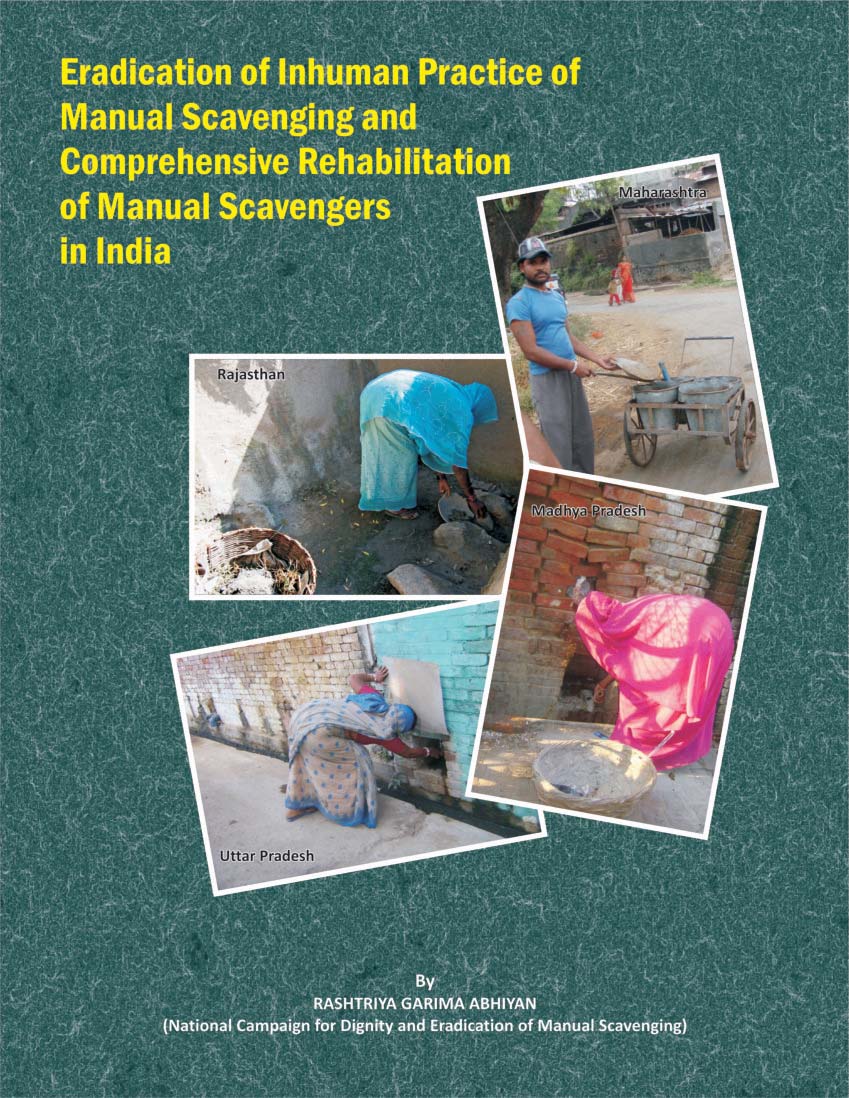/regions/india
India
Irrigation system operation practices - A handbook by Central Water Commission (1990)
Posted on 21 Apr, 2011 10:36 PMFor increasing agricultural productivity from existing irrigation systems, improved operation of the systems coupled with timely maintenance of the systems has a major role to play.
Eradication of inhuman practice of manual scavenging and comprehensive rehabilitation of manual scavengers in India – A report by Rashtriya Garima Abhiyan
Posted on 21 Apr, 2011 09:15 PM The practice continues in the country in spite of efforts of several people, implementation of government schemes such as the National Scheme for Liberation and Rehabilitation of Scavengers since 1992 and Self Employment Scheme
The practice continues in the country in spite of efforts of several people, implementation of government schemes such as the National Scheme for Liberation and Rehabilitation of Scavengers since 1992 and Self Employment Scheme
Country to have normal monsoon this year - PIB release
Posted on 21 Apr, 2011 03:21 PMReleasing Long Range Forecast for coming June to September period, Union Minister for Science and Technology and Earth Sciences, Shri Pawan Kumar Bansal said, “The rainfall for the country as a whole is most likely to be normal i.e. 96-104% of Long Period Average (LPA). Quantitatively, monsoon season rainfall is likely to be 98% of the LPA with a model error of + 5%.
Energy from Water
Posted on 21 Apr, 2011 10:49 AM
An example technology is pico-hydro that uses local streams as a resource.
- The technology is transferred as an asset to households of farmers with access to streams, in the Western Ghats region.
- Most critically, the households decide the allocation of water between electricity generation and irrigation - they manage their demand for electricity based on water availability. The entire system retrofits into their current irrigation infrastructure.
- At the same time, there is an entire value chain of enterprises that develop the technology and deliver it to the farmer's doorstep, integrating access to MNRE subsidies and loans as necessary.
Development of training module for water safety plan in urban areas - A document by ESCI
Posted on 20 Apr, 2011 03:48 AMA Water Safety Plan (WSP) is an improved risk management tool designed to ensure the delivery of safe drinking water. It identifies hazards, means to control them, means and actions to identify loss of control and its restoration. It comprises system assessment and design, operational monitoring and management plans (including documentation and communication). Water quality guidelines have been issued by the WHO.
Guidance manual for drinking water quality monitoring and assessment - A document by NEERI and NICD
Posted on 20 Apr, 2011 03:09 AMIn order to safeguard the health of the people, drinking water must meet quality standards. The main issues involved in drinking water safety are water quality management, surveillance and control mechanisms.
Levels of contaminants need to be ascertained through standard procedures. Each agency involved in water supply in India, has its own laboratory test practices and this manual details methods for all parameters adoptable by all laboratories.
Water safety plan: A manual for pilot study areas of Hyderabad
Posted on 20 Apr, 2011 02:03 AMThe most effective means of consistently ensuring the safety of drinking water supply is through the use of a comprehensive risk assessment and management approach, that encompasses all steps in water supply from catchment to consumer. Such approaches are called Water Safety Plans (WSPs).
The aim of a WSP is to organize and systematize records of management practices applied to drinking water and to ensure workability of such practices to organized drinking water supply.
Guidelines for water safety plans for rural water supply systems - A document by SIAES and WHO India (2009)
Posted on 20 Apr, 2011 01:10 AM Delivery of safe drinking water is vital for protecting public health and of promoting more secure livelihoods.
Delivery of safe drinking water is vital for protecting public health and of promoting more secure livelihoods.
The traditional approach to water quality and safety management has relied on the testing of drinking water, as it leaves the treatment works or at selected points, either within the distribution system or at consumer taps. It is referred to as ‘end‐product testing’.
Assessing acute Gastroenteritis risks associated with water quality and sanitation in Hyderabad city - A paper by the Institute of Health Systems (IHS)
Posted on 19 Apr, 2011 11:35 PMThe quality of drinking water is a vital element of public health and well-being. The most effective means of consistently ensuring the safety of a drinking-water supply is through the use of a comprehensive risk assessment and risk management approach that encompasses all steps in water supply from catchment to consumer.
WHO guidelines on water quality term these approaches as water safety plans (WSPs), developed to organize, systematize and apply management practices in drinking-water quality.
Water and wastewater treatment plants - A profile of Dayal Construction Company
Posted on 19 Apr, 2011 05:01 AMThe promoters have a combined industrial experience of more than 50 years in construction, water & wastewater treatment in fertilizer, power, electronics, steel, textile, chemicals, dyestuff & bulk drugs. The company provides total solution for complex water & wastewater problems and has created a niche for itself.